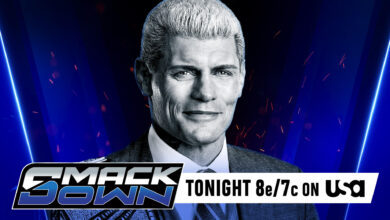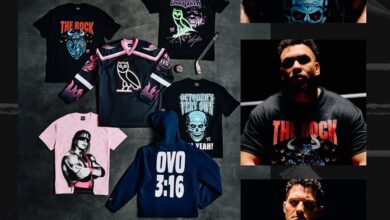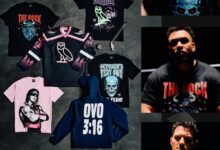Ryback Talks The Revival Contracts Running Up in WWE & His Experience Leaving The Company
Ryback gives his take on the situation between The Revival and WWE regarding the downside on their contract and shares his own experiences with that.
Back in mid-March, Fightful reported that The Revival either weren’t getting paid, or that it was “extremely scaled back” because they’ve already exceeded their downside guarantees. This comes as both Scott Dawson and Dash Wilder are going to have their respective contracts expire in the coming weeks and months.
Ryback, who wrestled for WWE for years, talked about The Revival’s current status and while he doesn’t know the specifics of their situation, he does understand to some extent what they are dealing with.
“I don’t know what kind of money they made. They weren’t up there forever, but I mean they probably made a little bit of money but that money, it’s nowhere what people think a lot of the talent. Even though it was more supposedly than in previous years, it’s very possible that they hit their downside and if they did, WWE would 100 percent pull their pay. I can tell you from firsthand experience that when I walked out of WWE, I walked out in May and my contract wasn’t up until August, they and I already knew my gameplan because I knew I could fall on injury pay. At the time though, I had not gotten any work done. I just walked out and they tried to suspend my pay two weeks later and they said, ‘We’re not going to pay you if you’re not sitting at home,’ and I said, ‘Fuck you, I’m hurt.’ I had a ruptured eardrum and a nose that I never got fixed. So I made them fix my ear and nose and then I got put on injury pay right away. I got paid and I stayed on the injured list and I didn’t get cleared until the day my contract expired,” Ryback said.
Ryback then further explained how the downside works for wrestlers in WWE and how some wrestlers could potentially not get paid even if they still have a few months left on their contract.
“So what happens is, so say you’re on a $250,000 downside and every week and you’re working live events, what they will essentially do is, say you’re figured in for the whole year, you’re on everything, you got all your action figures and all this other stuff. You get the video game and all this pay-per-view, network stuff, all that they’re obligated to pay you is your downside and then you have this other stuff figured in. So say you have a $250,000 downside, but because you worked every pay-per-view for the year and with your action figures and all the other merchandise stuff, say you hit $400,000 and it’s November and your contract isn’t up until December 31st or say you hit it in August and you had $400,000 and then you go home, the way the contracts are written out, they don’t have to pay you any more money on your downside. So they don’t have to pay you your weekly checks. They still have to pay you royalties and things when those come in quarterly because that’s different. Those percentages are locked in, but they don’t actually technically have to pay you your weekly downside guarantee,” Ryback said.
Ryback would also note that one could earn more than what their downside is by a “tremendous” amount, but added that it is very important for WWE wrestlers to get a high downside. Ryback said his downside early on in his career as the Ryback character in WWE was around $100,000 or $150,000 and eventually started making just under $1.1 million a year.
“I remember the way my contract was. At different points, it was like, I don’t know if it was five or six thousand dollars for like if that was the bare minimum on things. But if it wasn’t where I would get that check every week, they figure your live event pay, which is why a high downside is very important for all wrestlers and why WWE tries to talk to guys into not getting a high downside guarantee because if you’re on a million dollar downside, they got to pay you more money weekly [for live events] to hit your downside. You get more paid per live event on a million dollar downside than you would on a $250,000 downside,” Ryback said.
You can check out Ryback’s comments in the video at the top of the page. If you use any of the quotes above, please credit Fightful for the transcription.




